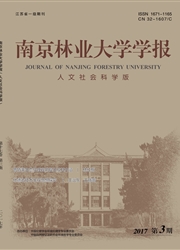

 中文摘要:
中文摘要:
情态与体在概念结构、表现形式上存在密切的联系,情态成分与体标记之间存在同现限制与互动。语义确定的体标记可以限定多义情态动词的情态表达。多义情态动词与现实体标记“了.”、经历体标记“过”,静态持续体标记“着。”同现时,多义情态动词得到认识情态的解释;大多数多义情态动词与起始体标记“起来”、继续体标记“下去”、短时体标记“VV”、“V—V”,动态持续体标记“着,”同现时,有获得根情态解释的倾向。单义的情态动词可以分化内部存在“着1”与“着2”之间歧义的“着”,分化内部存在“了1”与“了2”之间、“了1”与“了3”之间歧义的“了”。体与情态属于不同句法分层,但存在互动限制,在更高层次上体现了语言的系统性。在语言研究上则都为对方提供了更多的观察视角。
 英文摘要:
英文摘要:
Medality and aspect are closely related in conceptual structure and representations, with modals and aspect marks co-occurring and interacting with one another. Semantically determined aspect marks are to restrict the medality of medals. The polysemic medals can be explained in epistemic modality, in time of their co-occurrence with realis aspect mark "le1", or experienced aspect mark "guo", or static durative aspect mark "zhe1 ". Most of the pelysemic medals can be explained in terms of root modality tendency, when co-occurring with inceptive aspect mark "qilai", or continual aspect mark "xiaqu", or delimitative aspect mark " VV" or "V yi V", or dynamic durative aspect mark "zhuo2". Monosemantemic modals may disambiguite "zhuo" into "zhuo1 " and "zhuo2" and "le" into "le1 " and "le2" or into "le~ " and "le3 ". Aspect and modality belong to different syntactic layers, yet they embody higher language systematicity with their interactive restrictions, thus providing a larger perspective for language researchers on both.
 同期刊论文项目
同期刊论文项目
 同项目期刊论文
同项目期刊论文
 期刊信息
期刊信息
